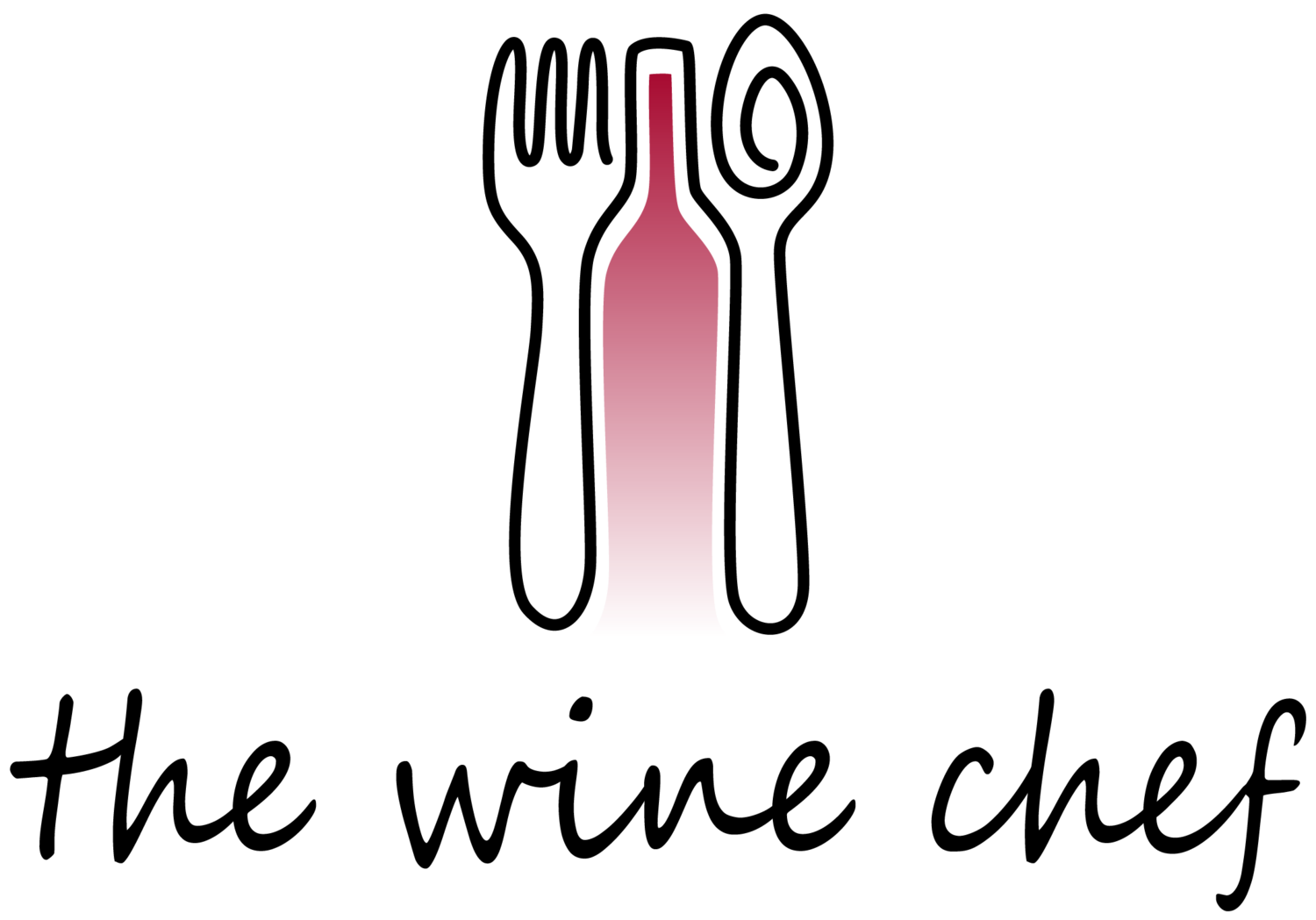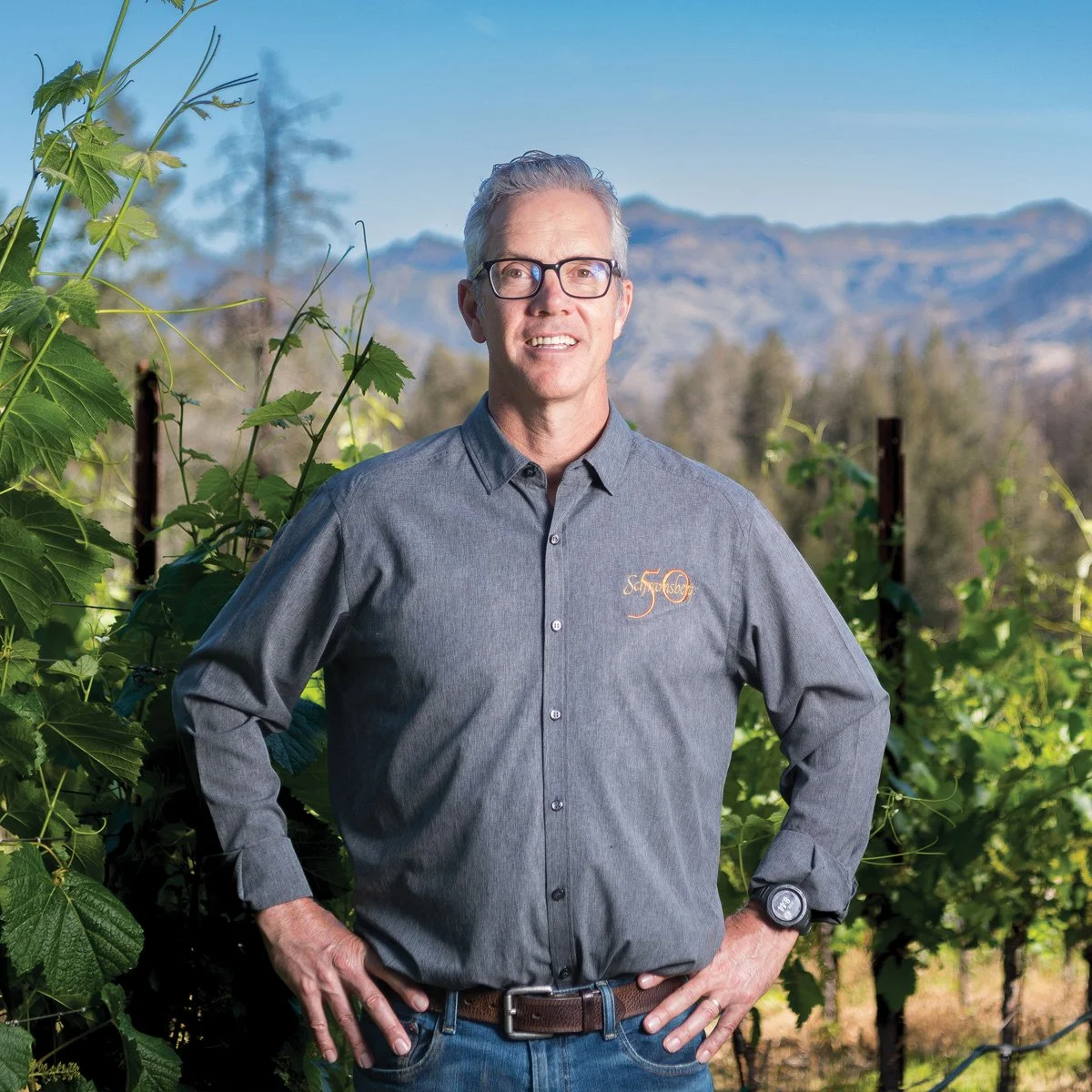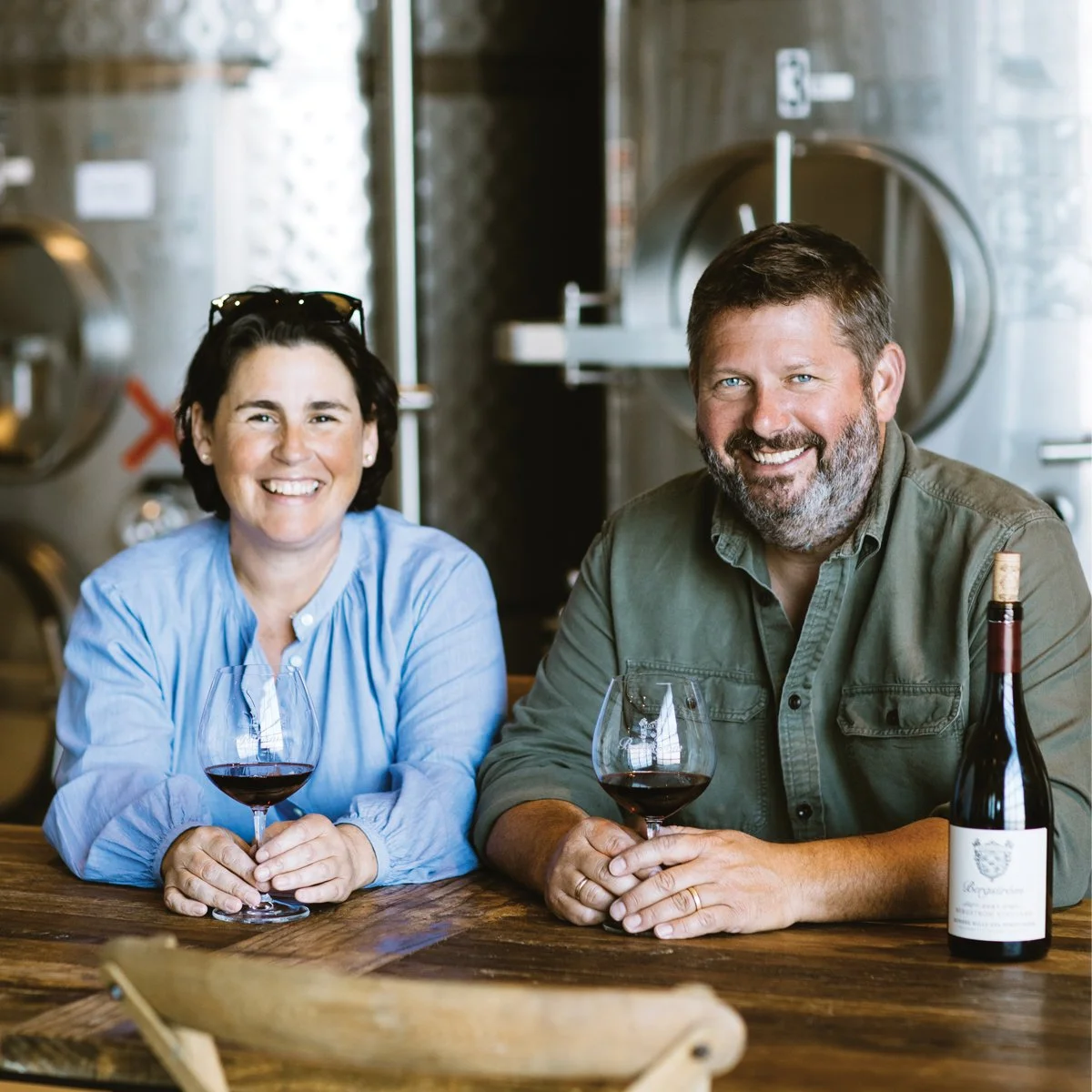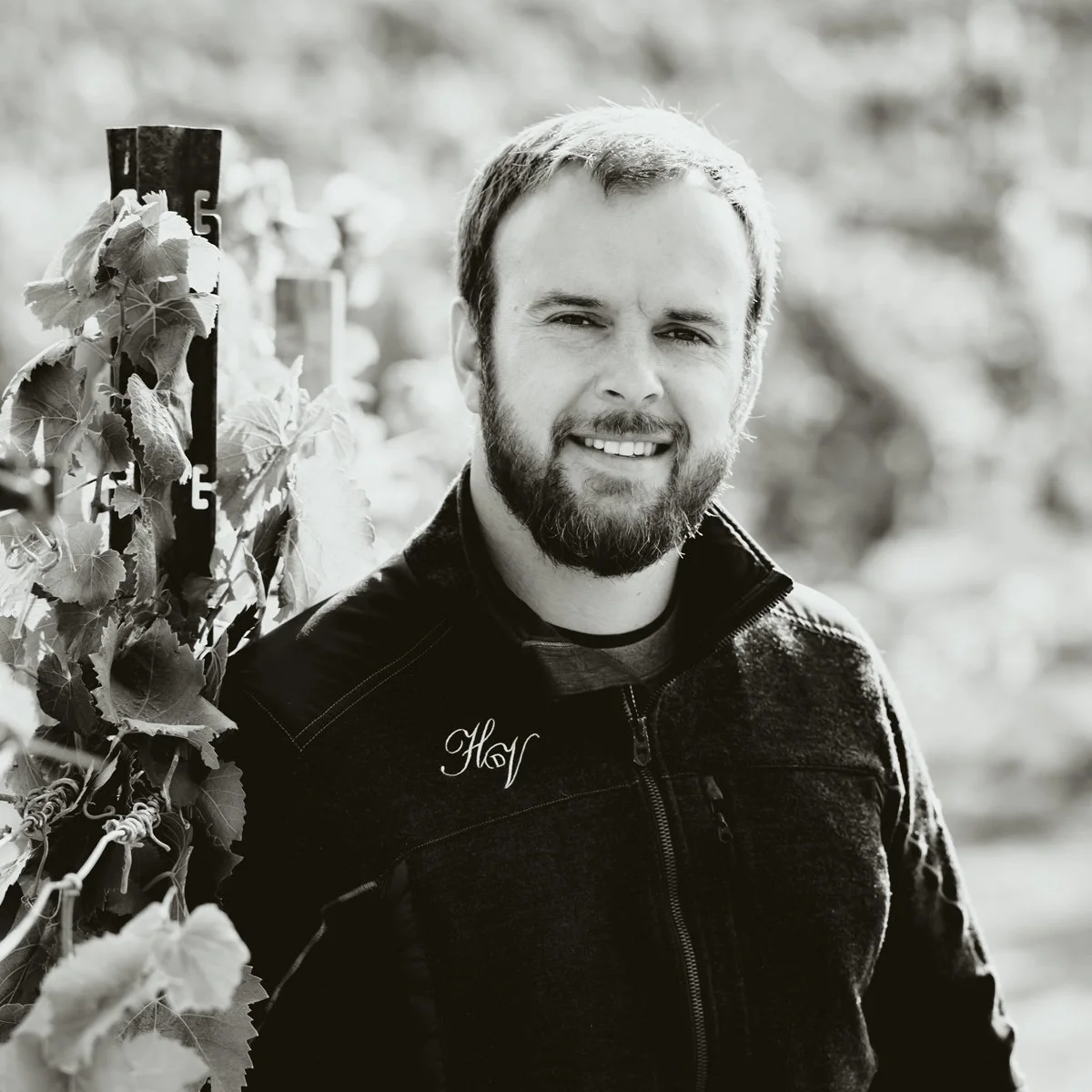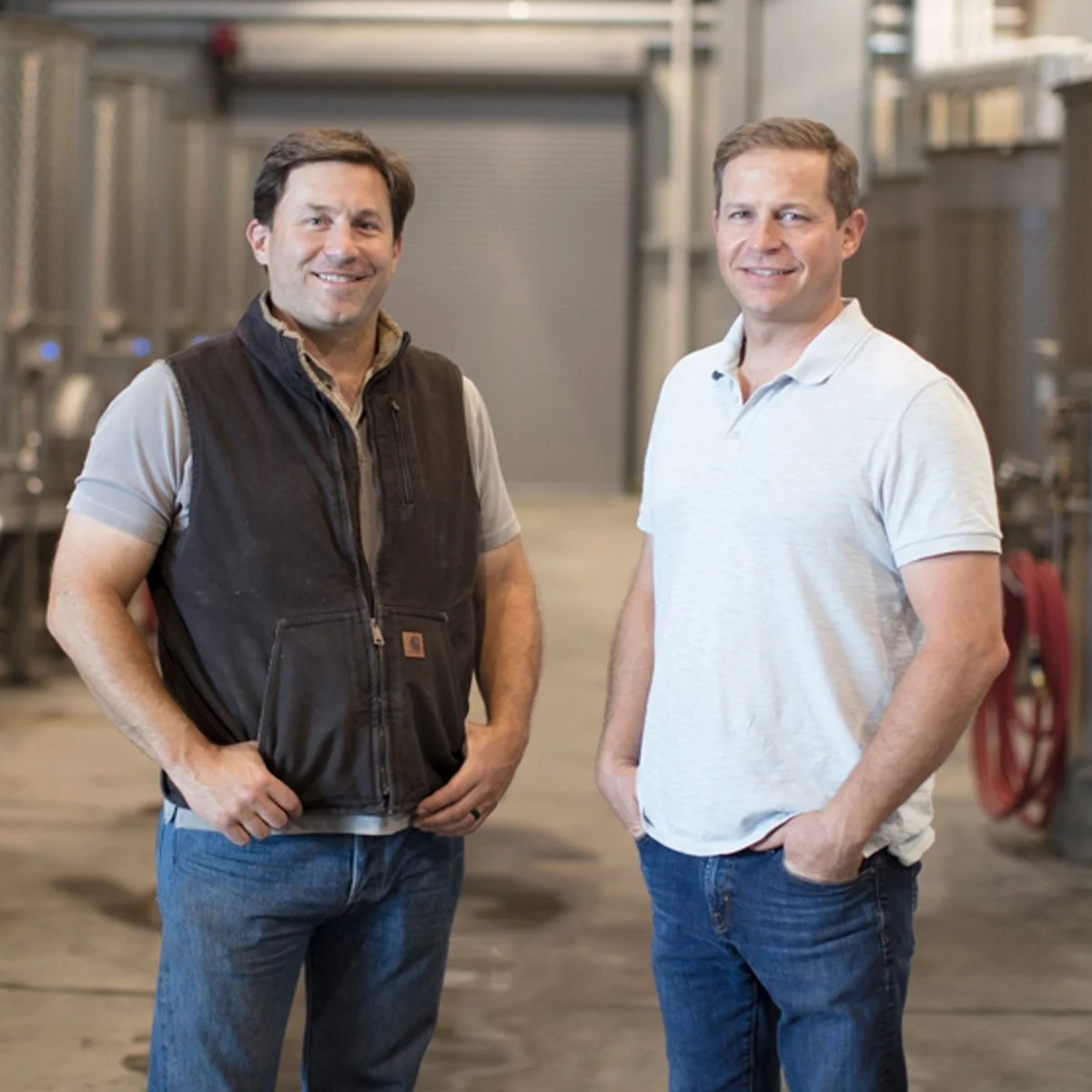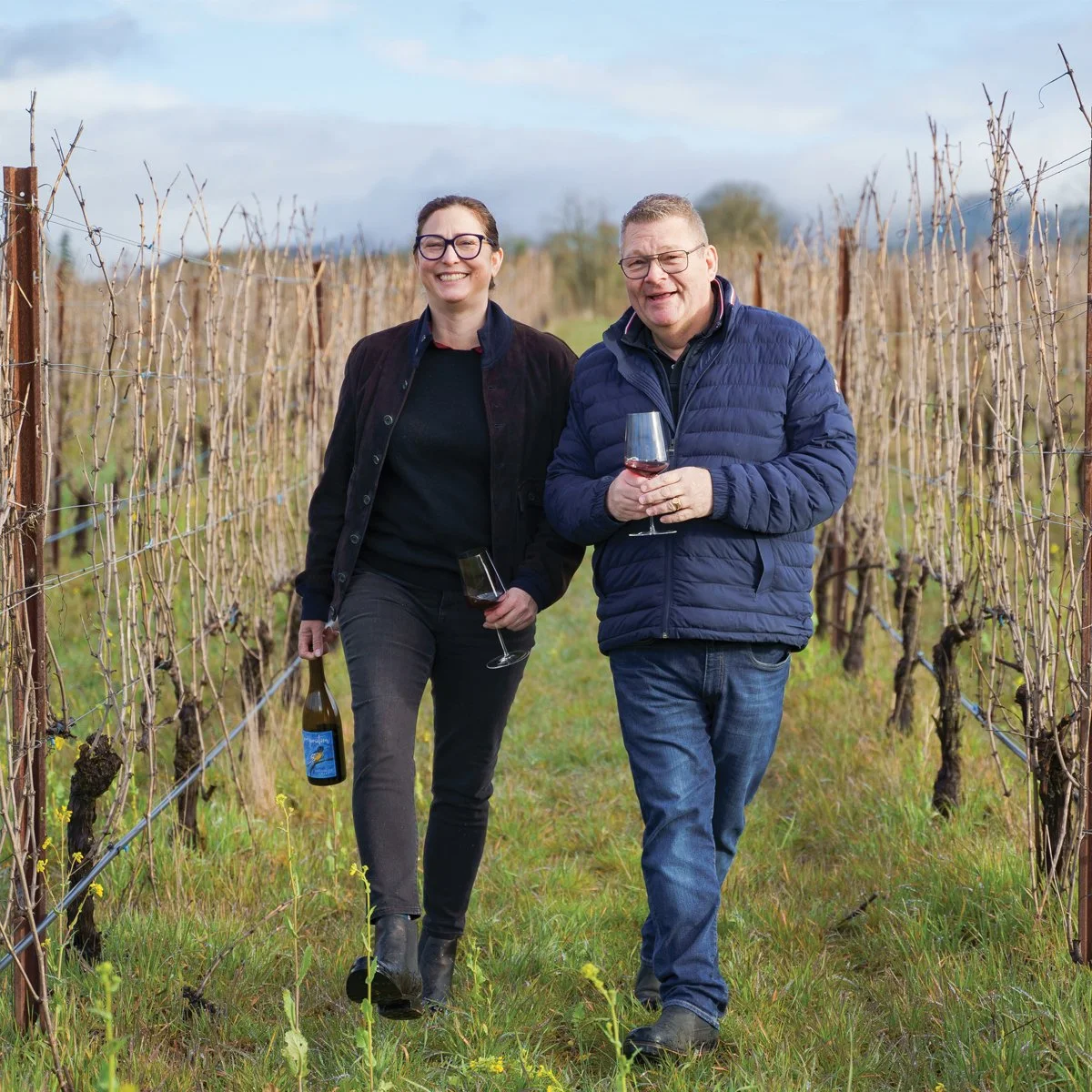Rooted in Place: Stories from California and Oregon Winemakers
/What happens when you gather top winemakers from California and Oregon around a dinner table in New York City? Along with great wine, you get stories, laughter, and a vivid picture of what makes the West Coast such an exciting wine-producing area.
Wine importer Wilson Daniels brought together its domestic portfolio at a media dinner in New York, offering a glimpse into the people and places driving the evolution of American wine—from Sonoma’s rugged coast and Napa’s sun-drenched vineyards to Oregon’s idyllic Willamette Valley.
Heritage and Heart
Hugh Davies. All photos courtesy of Wilson Daniels.
The stories the winemakers shared revealed that family, whether legacy or newly formed, is at the core of these wineries. Some have deep roots, with the second generation continuing their parents’ vision. Others are first-generation ventures, shaped by founders charting new paths for their families.
As we sipped on J. Schram 2015 Blancs sparkling wine, Hugh Davies reflected on his parents' bold move in 1965 to revive a dormant Napa property to create Schramsberg Vineyards, now considered one of California’s finest sparkling wine houses.
"My dad wasn’t the son of a winemaker. He was the creative one who set our family on this path,” Davies said.
Initially, the Davies made wine from vineyards in the upper Napa Valley. “By the 1990s, sparkling winemakers were looking to cooler regions,” says Davies, “like Carneros, Anderson Valley, and the Sonoma and Marin coasts. That raised a question: ‘What should we do with the home property?’” In 1994, the family planted Cabernet Sauvignon on their estate, charting a second path by creating Davies Vineyards.
Today, nearly three decades later, they’ve produced 21 vintages of J. Davies Estate Diamond Mountain Cabernet Sauvignon. “The fruit is 100% from our home vineyard,” Davies said. “We named it after my dad, Jack, who passed away in 1998.” And in 2001, they introduced J. Davies Jamie, a selection of the finest Cabernet Sauvignon from the same estate—this time in honor of his mother, Jamie Davies, who passed in 2008.
The theme of family continued with Josh Bergström of Bergström Wines. He shared the story of his Swedish immigrant father, who arrived in Oregon at the age of 16 without knowing a word of English. He went on to become a renowned OB-GYN, pioneering reconstructive pelvic surgery in the Pacific Northwest and founding the state’s first women’s health clinic.
Caroline and Josh Bergström.
“At some point, my dad tapped me on the shoulder and said, 'Let's start a vineyard. You can run it,” said Bergström. “I always say that he could've asked me to open a restaurant, and I'd be back in the kitchen tonight serving you oysters! But instead, I got to say yes to this incredible opportunity. The fact that he asked me to join him in business was the ultimate honor, because it was his American dream story.”
The funny thing was, Bergström added, “We knew nothing about wine. My dad didn't collect wine, didn't drink wine, and didn't have a vineyard. We built everything from scratch.”
Cool is Cool Again
Nowadays, climate change is always a part of the conversation. Finding ways to preserve regional character, even as weather conditions change, could be the key to American wine's future.
Hyde de Villaine, a partnership between the Hyde family of Napa Valley and the famous de Villaine family of Burgundy’s Domaine de la Romanée Conti (DRC), is tucked into Carneros at the southern end of Napa. “Forget the idea of big, buttery California Chardonnay,” said winemaker Guillaume Boudet. “Thanks to the fog and wind from the Bay and Pacific, our wines retain natural freshness and minerality.”
The same goes for his red wines, which defy Napa stereotypes. “I try to make old-school Napa: higher acid, lower alcohol, refined wines,” he said, “not the big, heavily oaked, super tannic style you often see today.”
Guillaume Boudet
Vance Rose
Over at Jonive Winery in Sonoma, winemaker Vance Rose is similarly cool-obsessed. The winery, owned by the Underwood family, a multigenerational presence in the wine and spirits industry, sits in the Sebastopol Hills. “We’re in the coolest part of the Russian River, and cool is good for Pinot Noir and Chardonnay,” explains Rose. The Jonive wines tasted at the dinner were indeed leaner, with a more restrained character, a style Rose says they want to preserve as warming trends continue.
In Oregon, a historically cooler area than California, Bergström echoed those climate concerns with optimism. “With climate change, our cool climate has warmed,” he said. “I brought a 2015 Pinot Noir tonight, the hottest vintage Oregon has ever recorded. Yet, it’s just 13.6% alcohol, balanced, and structured. So, no, we don’t need to switch to Syrah or Merlot. Pinot Noir is still thriving—and so are we.”
Getting Out of the Way
If there was one winemaking philosophy that united the room, it was the idea that less is more. And while California’s cooler pockets and Oregon’s volcanic hillsides might seem worlds apart, what unifies the wines—sparkling, white, and red—is a deep-rooted belief that character begins in the vineyard. As Katrina Rank of Composition, a relatively new venture rooted in Oregon’s Ribbon Ridge and Dundee Hills AVAs, put it: “Place is the protagonist. It tells the story if you let it.”
Vance Rose calls himself a “lazy winemaker" who tries "to do as little as I can, what the wine won't do for itself." With a laugh, he added, "What I've found is, grapes don't pick themselves, they don't transfer themselves to the winery, and they don't squish themselves. Beyond that, I let the grapes do their thing."
Gordon Miller, Associate Winemaker at Arista Winery in Sonoma’s Russian River Valley, put it plainly: "On the winemaking side, we do as little intervention as possible. We do all native fermentations and are very cautious with the use of new oak; we've never gone above about 35 or 40% new oak on anything."
Mark and Ben McWilliams, 2nd generation owners of Arista Winery.
Similarly, at Hyde de Villaine, Boudet focuses on what he calls the "Three Vs" in their wines: Vineyard site, Vintage, and Varietal. "We fully embrace vintage variation,” he said. “We don't try to standardize anything. Each wine is like a little time capsule, capturing a moment in time as honestly as possible."
American Wine Grows Up: Breaking Free from European Shadows
One thing became very clear early on in the evening: American wine has stopped trying to be European.
Josh Bergström offered a personal perspective on his winemaking evolution. "When I was a young winemaker, I didn't know who I wanted to be when I grew up,” he said. “Early on, I wanted to copy Burgundy and California—because Burgundy was the reference standard, and California was the dominant economic model. I was in my twenties and was focused on impressing people. I chased Parker points and Spectator scores, making dark, big, opulent wines. But over time, we found our true voice."
That journey toward self-definition has shaped not just individual winemakers but entire regions. In Oregon, that clarity has long centered on a single grape. “In the beginning, we had first-generation winemakers struggling to try to create an identity,” says Bergström. “Now, for over 60 years, we've had three words: Oregon Pinot Noir. Our strength is that we've always rallied around this one variety. The region’s founders—David Lett, Charles Coury, and Dick Erath—chose this valley for Pinot Noir after careful research. They didn't stumble upon it; they were intentional.”
In Sonoma, the process has looked a little different, but the goal remains the same. Rose says it took time to move past comparisons and forge an identity rooted in place. “Now, it’s the site that tells us what to do,” he said.
A Chance Encounter, A Shared Vision
Katrina Rank and Bertrand de Villaine. Photo courtesy of Wilson Daniels.
One of the evening’s most fascinating stories began with a seat assignment. Katrina Rank recalled how a chance meeting with Bertrand de Villaine, Co-Director of Burgundy’s famed Domaine de la Romanée-Conti, led to their unlikely partnership.
“Pinot Noir is what brought me and Bertrand together,” Rank said. “I was attending a wine conference in Burgundy, and hadn’t read the roster. I had no idea who I’d be sitting next to. When I mentioned to the man seated to my left that I wanted to leave California for Oregon, he said, ‘My wife and I do too—would you like to work together?’ It felt casual, but ended up being the start of something real.”
Only later did Rank—and her family—grasp the significance of her new collaborator, who is also the nephew of Aubert de Villaine, owner of DRC. “My family asked, ‘Are you sure about this gentleman?’ I said, ‘Here’s a book about his family. Read it. Don’t worry, I’ve got this.’”
The pair eventually chose Oregon’s Willamette Valley, where de Villaine had a personal tie. “He first came in 2009 while attending Linfield College,” said Rank. “When we returned in 2016, he even showed me the payphone where he called his wife to propose.”
Though Composition is a French-American partnership, its wines are unmistakably rooted in Oregon. “There’s been a real evolution in our collaboration,” said Rank. “I probably annoy Bertrand sometimes, but I think that’s the beauty of working in America. There are fewer social constraints than in France, and more freedom to experiment.”
That spirit of freedom and collaboration is part of what defines American wine, not just by what’s in the glass, but by the people behind it who shape its identity one vintage at a time.
